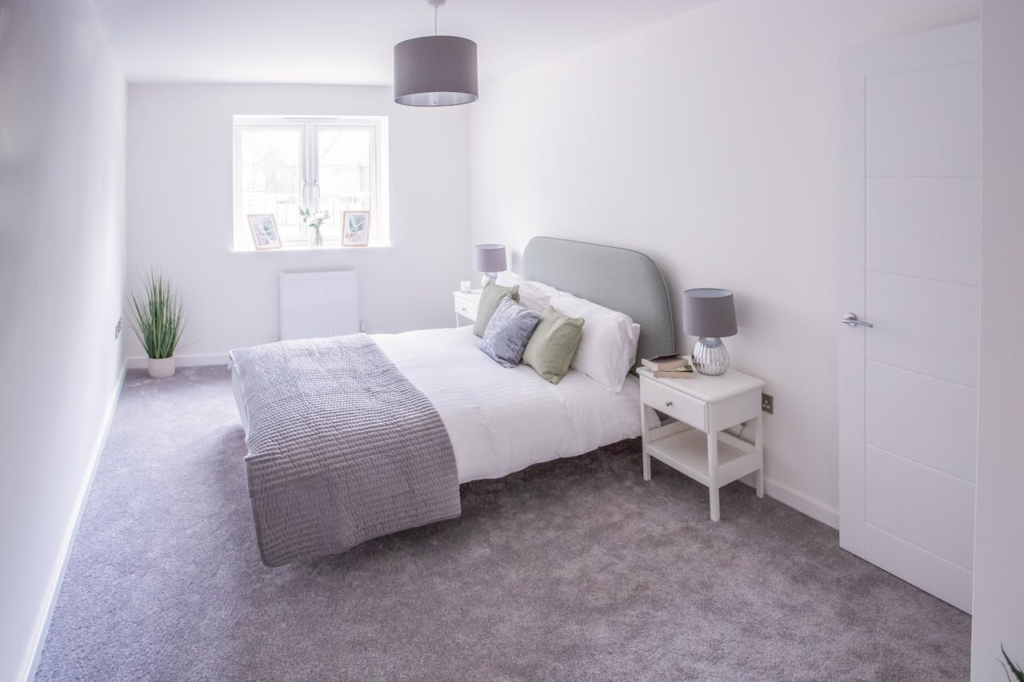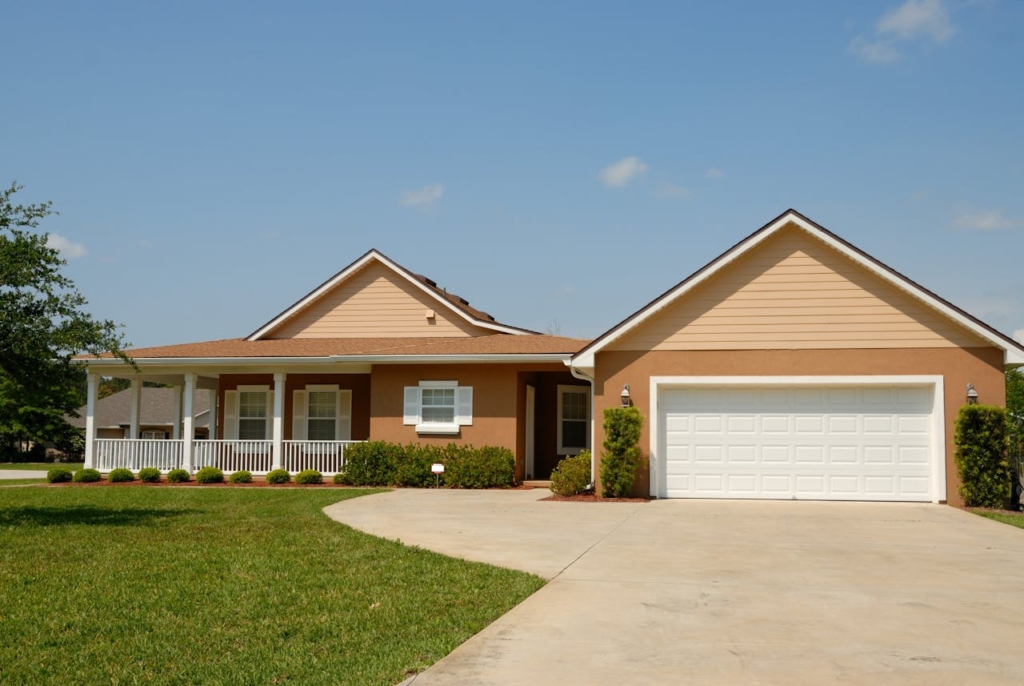It’s no secret that the first impression of a property often happens online. High-quality real estate photos are no longer a luxury; they’re a necessity.
Great photos can make a property stand out from a crowded marketplace, attract qualified buyers who are more likely to make offers, and ultimately lead to a faster sale.
In this comprehensive guide, you will find essential tips on how to take real estate photos that showcase a property’s true potential and capture the imagination of potential buyers.
How to Take Real Estate Photos: Preparation
Before you even pick up your camera, some crucial groundwork paves the way for successful real estate photography.
Plan the shoot
Schedule your shoot for a time with optimal natural light. Weekdays during the day are usually best, as they offer diffused morning or afternoon light that flatters the interior spaces. Do a walk-through of the property beforehand, taking note of the layout, flow, and best angles for each room.
Create a shot list to ensure you capture all the key features, including spacious living areas, well-equipped kitchens, inviting bathrooms, and any unique architectural details or outdoor highlights.
Collaborate
Work closely with the homeowner or realtor to understand the property’s unique selling points. Discuss any staging recommendations to create a clean, inviting atmosphere.
Decluttering and depersonalizing the space is crucial. Remove unnecessary furniture, personal items, and clutter to create a sense of spaciousness and allow potential buyers to envision themselves living in the property.
Staging furniture to promote the intended use of each space further enhances the appeal. For example, create a conversation area in the living room or a dining area that showcases the functionality of the kitchen. Strategically placed decorative accents like throw pillows, fresh flowers, or artwork can add personality and warmth without overwhelming the viewer.
How to Take Photos for Real Estate: Essential Equipment
While professional-grade equipment can elevate your photos, stunning real estate images can be achieved with the right approach and some essential tools:
- Camera: A DSLR camera with a wide-angle lens (ideally 10-24mm) is perfect for capturing spacious interiors without distortion. A good zoom lens can also be helpful for capturing details or showcasing expansive outdoor areas.
- Tripod: A tripod ensures sharp images by keeping your camera steady, especially in low-light situations. This is particularly important for capturing clear lines and maintaining a consistent perspective throughout your photos.
- Lighting: While natural light is preferred, a flash can be a valuable tool. Use a flash with a diffuser to bounce light off walls or ceilings for soft, even illumination in darker areas or to create a specific mood.
Master the Art of Light

Lighting is paramount in real estate photography. The best way to harness its power is to embrace natural light. Open all curtains and blinds to maximize natural light. However, avoid harsh midday sun that can create unflattering shadows. Diffused morning or afternoon light is ideal, as it casts a soft glow and creates a more inviting atmosphere.
If necessary, use a flash with a diffuser to bounce light off walls or ceilings to fill in shadows and create a more balanced exposure. This technique is particularly helpful in rooms with limited natural light or for highlighting specific features.
Choose the Right Composition
Through composition, you strategically arrange elements within the frame to create visually appealing and informative photos for real estate listings.
- Rule of thirds: Divide your frame into a grid of nine equal squares. Position key elements of the room at the intersections or along the lines for a balanced composition. This creates a more visually pleasing image and draws the viewer’s eye to the most important aspects of the space.
- Leading lines: Use natural lines within the room, like hallways, furniture, or staircases, to draw the viewer’s eye into the image and explore the space. Leading lines create a sense of depth and flow, inviting the viewer to imagine themselves moving through the property.
- Negative space: Don’t fill every corner of the frame. Allow for negative space, which is the empty space around the subject. Negative space creates a sense of balance and airiness, making the room feel larger and more inviting.
How to Take Good Real Estate Photos: Capture the Details
While showcasing the overall flow of a space is important, don’t neglect the details that add character and value to the property.
Highlight architectural features
Pay attention to unique architectural elements like fireplaces, built-in shelving, or crown molding. Capture these details with close-up shots to emphasize their craftsmanship and add visual interest to your photos.
Capture the view
If the property boasts a stunning view, ensure you capture it from various angles. This could be a breathtaking ocean vista, a picturesque mountain backdrop, or a charming cityscape. Showcasing the view not only highlights a key selling point but also creates a sense of connection between the property and its surroundings.
Don’t forget the close-ups
Focus on high-quality close-up shots of unique features that elevate the property’s value. This could include high-end appliances in the kitchen, luxurious finishes in the bathrooms, or custom built-in cabinetry. Capturing these details allows potential buyers to appreciate the quality and craftsmanship of the property.
Edit Your Photos
Basic post-processing can elevate your real estate photos from good to great. However, remember that the goal is to enhance the image, not create an unrealistic portrayal of the property.
- Adjust the white balance and exposure: Apply the white balance for natural-looking colors and correct exposure for optimal brightness. This ensures the colors in your photos accurately reflect the property and creates a balanced and visually appealing image.
- Straighten and crop: Ensure your photos are straight and crop them for better composition if necessary. Cropping can help eliminate distracting elements or emphasize specific features of the space.
- Enhance but don’t overdo it: Use editing tools like contrast and clarity sparingly to subtly enhance the photos. Avoid oversaturating colors or applying excessive sharpening, which can create an unnatural look.
Embrace Virtual Tours
Virtual tours offer potential buyers an immersive experience, allowing them to explore the property virtually from the comfort of their own homes. Invest in a 360° camera or consider hiring a professional to capture a virtual tour. This allows viewers to explore the entire space at their own pace, navigate from room to room, and get a true sense of the layout and flow of the property.
Additional Tips for Better Real Estate Photography

Here are some additional tips to keep in mind as you embark on your real estate photography journey:
- Shoot in landscape mode: Landscape orientation offers a wider view that’s more suitable for displaying properties online.
- Maintain a consistent look: Develop a consistent editing style for all your photos. This creates a cohesive visual experience for potential buyers browsing your listings.
- Bracket your shots: Take multiple exposures of the same scene with varying levels of light. This technique, known as bracketing, allows for more flexibility during editing, ensuring you capture the details in both highlights and shadows.
- Mind the weather: Avoid scheduling shoots on rainy or gloomy days. Overcast skies can make exteriors appear dull, while rain can create unwanted reflections. Opt for clear days with soft, natural light for optimal results.
- Safety first: Be cautious when shooting on uneven terrain, around pools, or near open windows. Prioritize your safety and avoid taking unnecessary risks to capture a photo.
How to Photograph Real Estate: Conclusion
By following these tips and practicing good technique, you can capture stunning real estate photos that showcase the true potential of a property. Remember, high-quality photos are an investment that can significantly increase interest, generate more leads, and ultimately lead to a faster sale.
By mastering the art of real estate photography, you can transform listings from ordinary to extraordinary, captivating the hearts of potential buyers and establishing yourself as a valuable asset in the real estate industry.
